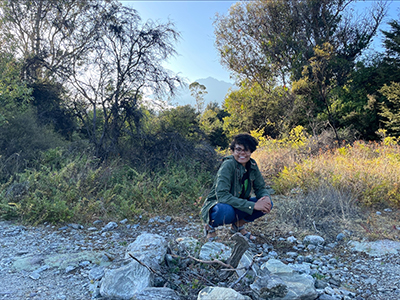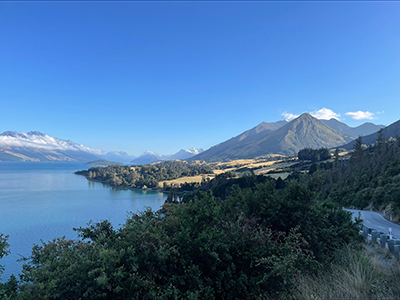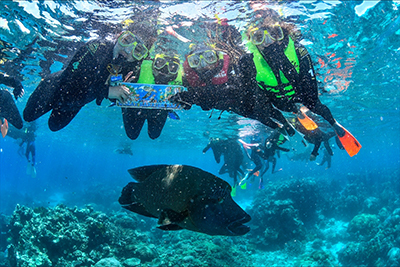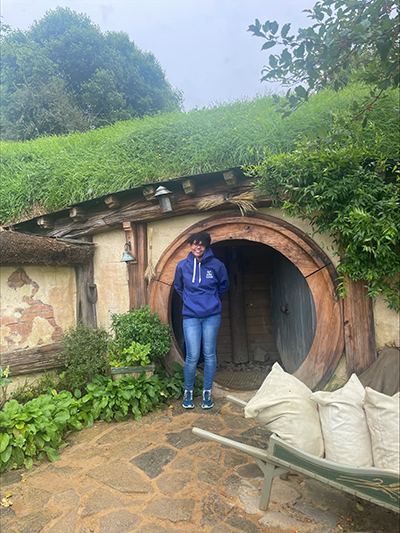Learning Local Culture in Australia and New Zealand

My name is Alison Barlow, and I am a student at Green River College (GRC). I found out about the Study Abroad program through Sara Keene, my sociology professor and mentor, who introduced me to Megan, the Study Abroad coordinator. I have a passion for learning and have always loved school; when Megan told me about certain programs, I was immediately hooked.
In August of 2022, I received a letter from Green River College Study Abroad saying my academic records made me a candidate for Studying Abroad. The letter stated that in winter quarter 2023, GRC will be doing a study abroad program in Australia and New Zealand. I applied for the program, which included an interview with the Study Abroad coordinator, and I was accepted.
During fall quarter in addition to taking classes, I began preparing for my study abroad trip. I asked for advice from my cousin who studied abroad in Italy and multiple friends from Green River who are international students. A week into winter quarter, we left for Melbourne, Australia. Dealing with jet lag the first day was a challenge, but the excitement of being in Australia and embarking on this study abroad experience was thrilling.

We took a bus to Newman College, a residential college at the University of Melbourne, where we stayed in dorms on campus. We took biology, cultural anthropology, and history of Australia and New Zealand. While we spent some time in a classroom, more than half of our time was spent on field trips and outside; it was very hands-on learning. We had experiences and interactions that cannot be replaced by reading about it in textbooks nor watching videos about it. That is what made the study abroad experience so wonderful.
Our first field trip was to the Melbourne Museum, and we saw the Aboriginal exhibit. I greatly enjoyed this, as I love museums and it was eye opening to see firsthand some aspects of Indigenous Australian culture—a culture that is often overlooked.
We watched several Australian films, including Rabbit Proof Fence, a well-known movie about three half Aboriginal, half European girls who were forcibly taken to Moore River Native Settlement, one of many residential schools designed to assimilate Indigenous Australians and erase their culture. The film documents these girls escape from the residential school. Rabbit Proof Fence is based on a true story.

We also went to Healesville Sanctuary, a zoo in Australia. There we saw koalas, kangaroos, and a number of other indigenous animals. One of our tour guides was an Aboriginal woman named Lisa Hodgson, a relative of Molly Craig, Daisy, and Gracie, the girls in Rabbit Proof Fence. I asked her for her perspective on the film, and she informed me it did not accurately represent her relatives’ story, nor did it accurately represent her culture, romanticizing it. While she is glad the film exists, the film also infuriates her. Interacting with her and meeting her was a powerful experience for me. She taught me some words in her language, for example “Nukkin ya borda,”which translates to “see you next time friend,” in the Noongar language.
Australia has a similar history to the USA because it was colonized by the British, it excluded non-Europeans from immigrating to their country, and it has diverse peoples. For instance, we visited one of Melbourne’s Chinatowns. We travelled to Bendigo Golden Dragon Museum and learned a great deal about Chinese immigration to Australia, the role the Chinese played in the development of this country, and the ways in which they keep their culture alive.
January 26 was Australia Day, a holiday that celebrates the arrival of Europeans in Australia. Aboriginals do not celebrate the holiday and they call it Invasion Day. Several of us went to a protest in Melbourne. It was a long march; there were traditional Aboriginal dances, Aboriginal singing, and many signs and posters. The chant was “Always Was, Always Will, Be Aboriginal Land.” I never felt safer at a protest before. I loved going to that protest because it taught me the importance of standing for decolonization and it inspired me to educate myself in the forgotten history of the land that became the United States.

During our break, several of us went snorkeling near the Great Barrier Reef, which was amazing. One cannot comprehend the beauty of reefs unless one snorkels or scuba dives.
After that, we flew to Auckland, New Zealand. The main thing I noticed about Aotearoa (the native Māori name for New Zealand) is how prominent Indigenous peoples and culture are across the country. Māori is an official language in New Zealand. We got to visit the Te Matatini festival, also called Kapa Haka, which is an event held every two years, though this was the first time it was done in Auckland. It was a beautiful event and many of the Māori people performed traditional dances and songs.
On another day, eight of us took a weekend trip to Hobbiton, where The Lord of the Rings (LOTR) movies were filmed. We got to see behind the scenes pictures and videos for LOTR and the Hobbit. And on our last in person class day, we gave biology presentations, and took part in a farewell at the Marae. We then flew back to the United States.
My study abroad experience made me a better, humbler person. It broadened my global perspective on the world and helped me realize there is a bigger world outside the US. It helped me feel more self-confident as a person as well.